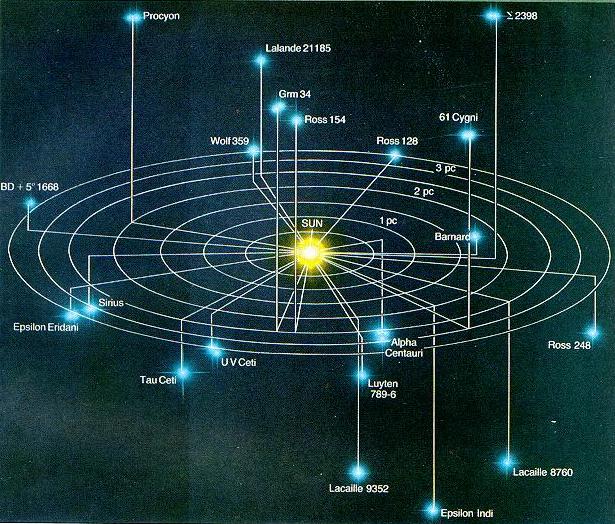Project Synopsis
Since the discovery of exoplanets (planets beyond our solar system) at the end of the 20th century, scientists have dreamt of sending robotic probes to these distant worlds for observation. The distance is overwhelming, both from a travel and communications point of view. Under today's propulsion options, the space probe would take many centuries to arrive at an exoplanet, making any recovered information a gift to a distant and successive generation of human beings.
But what a gift! To this end, the National Aeronautics and Space Administration (NASA) recently awarded your university laboratory a small semester-long grant to perform a paper study design on the first potential mission to an exoplanet. You and your students must provide a design capable of sending high-resolution images back to earth from the nearest exoplanet populated star system, Epsilon Eridani (10.5 light years away).[1]
Our summary video
Introduction
Interstellar travel has always been the topic of science fiction movies and stories. It may be hard to travel to distant stars that are visible during the night, but not impossible. Currently, there are numerous studies being conducted to make interstellar travel possible, thus allowing the study of exoplanets. Figure 1 shows the interstellar neighborhood in our galaxy.

Figure 1. Our Interstellar Neighborhood.[2]
Interstellar Data ExpressTM will be the first company to make this fiction become a reality by sending the Interstellar Data Express Epsilon Eridani Space Probe (EESP)TM to Epsilon Eridani and bringing back pictures from outside the solar system within two centuries. The main challenge that the team will be confronted with in traveling to Epsilon Eridani is the colossal distance from the earth. This interstellar travel will require the spacecraft to achieve an incredible velocity, which can only be made possible by having an enormous amount of energy. The total energy produced by the U.S. for the majority of a year will be required to move the 1,000 kg at 1/3 times the velocity of light. Figure 2 shows the amount of energy needed to accelerate a 1000 kg mass at various velocities.[3] To make this project a reality, top scientists from their respective fields will work with dedication to bring the first images from beyond our galaxy.

Figure 2. Energy versus Velocity to Interstellar Speeds.[3]
The design of the EESP will be based on Project Daedalus which was proposed by Alan Bond at the British Interplanetary Society in 1973. Project Daedalus was based on the technology available in the 1970s and on near-future technology.[4]
References
1.
Satellite Communications Class Project: Exoplanet Mission. ECE 6390. Fall 2010.
2.
Distance to Stars
3. Mankins, John C. "Reaching for the Stars: Thoughts Concerning the Past and Future of Interstellar Flight." 57th In-ternational
Astronautical Congress (IAC-06-D3.2.8). October 2006.
4.
Project Daedalus